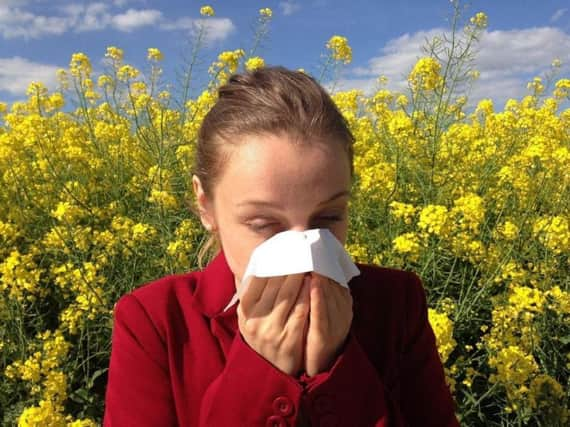What are the common signs of hay fever and how do I treat the allergy?


An allergy caused by pollen, the so-called "hay fever season" runs from March to November in the UK and is split into three sections.
According to the Met Office, tree pollen affects people from March to mid-May while the grass pollen season runs from mid-May until July.
Advertisement
Hide AdAdvertisement
Hide AdWeed pollen season usually runs from the end of June to September.
As the weather warms up and you start to reach for the tissues, here's everything you need to know about hay fever, how to deal with it and where to look for the forecast.
What are the common symptoms?
Sneezing, a runny nose, a blocked nose and itchy eyes, mouth and throat.


It is difficult to avoid pollen exposure completely during hay fever season, but there is advice you can follow to make the allergy bearable.
Some people also suffer from headaches, hives and earache.
What can I do for relief?
Advertisement
Hide AdAdvertisement
Hide AdAccording to the NHS, there a number of things you can do to ease your hay fever symptoms.


These include keeping windows and doors shut when you are indoors, vacuuming regularly and dusting with a damp cloth.
You can also wear wraparound sunglasses to avoid pollen getting into your eyes, apply petroleum jelly around your nostrils to trap pollen and shower to wash pollen off after you have been outside.
Pharmacies can also provide remedies.
How does the weather impact hay fever?
Rain, wind, temperature and sunshine all play a part in how pollen will be produced and dispersed.
Advertisement
Hide AdAdvertisement
Hide AdAccording to information from the Met Office, rainfall can help keep pollen counts low if it happens in the early hours and is heavy.
Certain temperatures also affect the release of pollen, combined with other factors.
Continued high temperatures can lead to the supply of pollen running out, while grass and trees peak between different temperatures.
What is the pollen forecast and how do I check it?
The Met Office provides a daily pollen forecast throughout the hay fever season and it is split into four categories; low, moderate, high and very high.
Advertisement
Hide AdAdvertisement
Hide AdIt is created using data from the Met Office network, information from the National Pollen and Aerobiological Unit and updates from social media and sufferers of the allergy.
According to the forecast, the North East is set to experience a low pollen count for the next four days.